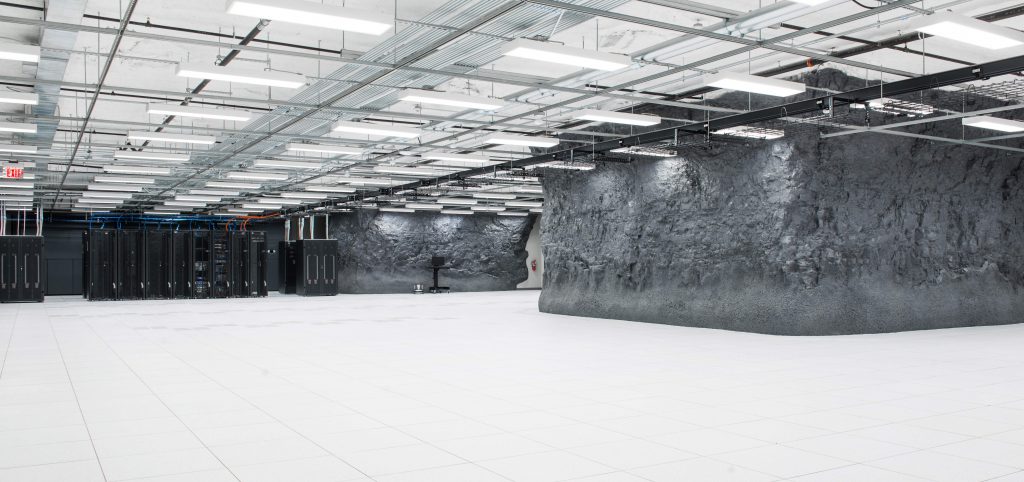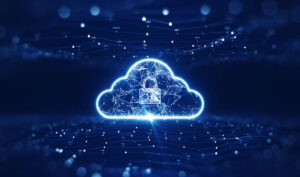Data center spending is continuing to rise. According to a Fortune report, the United States saw a $18.2 billion investment in building or buying data centers in the first half of 2017. With all of this growth that we are seeing, some of it is taking place underground. Data center and colocation providers are looking to build underground facilities due to lower cost or resources and higher security standards.
More and more underground data centers are popping up all the time, and customers are experiencing the benefits of computing below ground. In theory, underground storage sounds like the safest bet in terms of natural disaster protection. Yet, if providers are not going beyond physical security measures, they are putting customers and their data at risk.
It is no surprise that security is one of the top benefits of using an underground colocation provider. However, it is the cooling systems and access to inexpensive energy that are probably the standout features of underground facilities. While there are many benefits of underground data centers, myths have started circulating, making colocation vetting a confusing process. We will cover and debunk the misconceptions that come with underground colocation facilities and set the record straight.
#1 Underground Data Centers are the Safest Space to Store Data
With the proper safeguards in place, underground data centers can be an extremely safe space to store data. Unfortunately, there is a rise of data center customers across the country experiencing early equipment failures due to underground storage. This kind of environment has resulted in excess heat and air quality issues in a data center facility, causing corrosion and costing customers thousands of crucial dollars and cutting short the life of their equipment by a number of years.
Underground data centers can be the safest space to store data, unless the infrastructure lacks an all-encompassing security strategy. When choosing a data center colocation provider, it is important to understand what certifications and security processes they have in place. A provider should remain up to date on all of the most vital compliance regulations and remain committed to working with customers as their colocation partner.
While there is no need for extra physical barriers because there is less chance for a physical breach, there are other risk factors. Here are factors that could make underground data centers an unsafe space to store your data:
Lack of Real-Time Air Quality Monitoring
When you hear the phrase “indoor air quality,” most minds turn to the comfort of people in an occupiable space. However, we will be using the phase to discuss how indoor air quality is associated with mission critical infrastructure.
Changing, maintaining, and monitoring data center environmental conditions are extremely important to IT and power equipment. The American Society of Heating, Refrigeration and Air-Conditioning Engineers (ASHRAE) issued its first thermal guidelines for data centers in 2004. The current 2015 ASHRAE thermal guidelines now contain an important change in the way temperature rate of change is specified. This new change calls out a maximum temperature change in an hour rather than an absolute rate of temperature change.
Some underground colocation providers are using outdoor air for free cooling as a way to reduce energy costs. For many providers this is now the standard design approach for new facilities. While this has led to dramatic energy savings, the use of free cooling has led to much higher failure rates due to the effects of pollutants, higher temperatures, and fluctuating humidity.
When it comes to real-time air quality monitoring, LightEdge never skimps on installing the highest preforming resources in our underground data center facility. Here are the specific power HVAC specifications for our underground Kansas City data center campus:
- Low kW costs (especially compared to other areas of the U.S.) for on-grid power
- KCP&L electrical grid located on property
- Concurrent maintainability including:
- 2 separate power feeds
- Liebert CRAH & UPS with system-level redundancy and N+1 components
- 3-foot raised floor in data center rooms
- Chilled water system for cooling DC environment
- Parallel 600 kW generators that will grow with facility to 2.4 MW of capacity on each side
- Power density up to 8.6 kW per rack
Lack of Sufficient Cooling and Monitoring
With the increase in data center spending, there is an increase demand for data center cooling to reduce the overall IT costs. According to Allied Market Research, the global data center cooling market size was valued at $8,384 million in 2017, and is projected to reach $23,215 million by 2025, growing at a CAGR of 13.7% from 2018 to 2025.
There are two types of data center cooling systems, and they are air-based or water-based. Through air-based cooling, air is circulated in the data center to maintain the temperature. A similar process is called hot and cold aisles. This method works by separating the cold air from the hot air by facing the cabinet sides away from each other.
On the other hand, water-based cooling is further bi-furcated into immersion cooling and water-cooled racks where liquid coolants flow across hot components to maintain the temperature. e water then runs alongside the server behind a barrier. The cold water helps bring down the temperature of the components inside.
LightEdge uses redundant Liebert DS chilled water-cooling systems that are implemented and monitored in each of our data center facilities to ensure that servers are always kept at their optimal operating temperature. All of the LightEdge data center facilities and equipment are monitored by expert Network Operations Center (NOC) staff 24x7x365. The NOC is always staffed and monitored by a live technician.
#2 An Impressive-Looking Underground Facility Means the Provider Has Equally Impressive Service Delivery
This is false. Many customers are easily swayed by the flashiness of being in an underground facility. These distracting details can pull you away from the standards you truly need to consider.
Before getting carried away by appearances, arm yourself with knowledge about colocation standards. If you do not know where to start, here is a guide to the 10 critical questions to ask your data center provider. Be sure your colocation provider is able to answer the tough questions.
In parallel, some colocation sites do not have all of the aesthetic bells and whistles but have great uptime performance. It is important to come backed with knowledge and not judge a book by its cover.
Underground Data Center Details You Need to Consider
Working with a colocation partner can provide the benefits of lowering operational and personnel costs, increasing reliability and performance and re-directing resources. To ensure that the impressive-looking underground facility is also equally as impressive with their service delivery, here are details that every facility should have.
Data center redundancy is a critical detail that underground colocation facilities must have. The redundancy of a data center’s critical systems is a crucial factor for ensuring its uptime. And the most important critical system is power. Data centers with the highest levels of redundancy provide at least two totally independent, parallel paths of power all the way from the utility to your racks. We call this a Redundant Isolated Path Power Architecture.
The next detail to look for in an underground data center facility is security. A data center should employ comprehensive security measures, from the physical characteristics of the building location all the way to the individual cameras located throughout the data rooms.
On top of security, it is important to inquire about what certifications and audits does the underground data center facility have. A data center must have controls in place that comply with industry recognized standards. Standard audits and certifications for data centers include: SSAE, ISO 20000-1, ISO 27001, PCI (payment card industry) and HIPAA (Health Insurance Portability and Accountability Act for protection of sensitive electronic protected health information).
Other layer of detail that you should consider is the level of support you will receive. Make sure that your data center’s Network Operations Center is staffed 24/7/365 by on-site engineers that can actually provide hands-on help in the event of a problem or emergency.
#3 Underground Data Center Space is Too Expensive
Data center colocation space can run the gamut from super cost effective to extremely expensive. It is ultimately up to the customer to decide what they are looking for and where they are not willing to cut corners.
Thankfully, Iowa and other areas in the Midwest are home to many renewable energy sources. The state is the second-largest producer of wind energy in the United States, according to the energy information administration. The amount of Iowa’s electricity produced by coal declined from 76 percent in 2008 to 47 percent in 2016. This could mean major savings for those looking to use a colocation provider.
Some colocation providers offer geo-diverse locations. This means if there is an incident at one data center, the data can be re-routed to another so business maintain 100 percent uptime. These redundant benefits may be difficult and costly to achieve if the hardware is on premise.
Tax Exemptions
If you’re looking for a data center provider in the Midwest, owners of the data centers pay fewer taxes to have their facilities in states like Iowa. Backup power generation fuel and electricity for the data center’s use also are exempt from sales tax.
Computers and other equipment used for the data center also are exempt from property taxes under Iowa law, for those data centers that meet the above requirements. This could mean millions of dollars in savings for larger companies that have more equipment.
Avoid Failures and Check Out LightEdge’s World-Class Underground Colocation Facility
At LightEdge, we strive to keep you in top working order for the full life of your equipment, meaning no downtime and less costly repairs and replacements. All customer equipment at our facility is in an open-air environment protected by a retaining wall, which means optimal temperature and air quality through ongoing monitoring and management. If you’ve been experiencing issues with your current data center’s equipment storage, we want to talk to you.
Our LightEdge facilities are more advanced than traditional data centers. We have created true Hybrid Solution Centers designed to offer a complete portfolio of high speed, secure, redundant, local cloud services and managed gateways to public clouds through our hardened facilities.
As a top-tier colocation services provider, we deliver a high level of availability and reliability through secure, certified data centers and dedicated staff onsite. Our customized and scalable services give you the control, whether you need a colocation rack, cage, or custom suite now or in the future.
Customers turn to LightEdge to reduce risk of non-compliance, scale security, and for the predictably and cost-effectiveness. LightEdge provides customers with an extended team of experienced engineers and helps to focus resources on agility and differentiation. Are you curious how your current provider stacks up? Our security experts will provide a free security assessment to see how you measure up against the latest compliance and security standards.
If you are interested in getting a risk free assessment from our healthcare compliance experts, a tour of any of our compliant data centers or to learn more about LightEdge’s compliance offers, contact us here. We have cloud hosting security and compliance experts standing by to answer any of your questions.
If you want to learn more about HIPAA compliance download our two e-books, Patient Privacy and Data Security: Utilizing IT Vendors to Meet HIPAA Compliance and Avoid, and How to Deploy a Secure Compliant Cloud for Healthcare.
Related Posts:
- 4 Colocation Myths the Healthcare Industry Should Leave Behind
- 6 Important Considerations for Choosing a Secure Colocation Provider
- Why Colocation Boosts Long-Term Scalability
- Seven Reasons Colocation Needs to be Part of Your IT Strategy
- Five Reasons Your Growing Business Needs Compliant Colocation
- The Best of Both Worlds: Colocation and PCI DSS Compliance
- Data Center Design: Compliance, Location and Regulations
- Data Center Security: Why Providers Should Build Security into Every Detail
- What to Look for in HIPAA Compliant Hosting
- Data Center Checklist: 5 Factors for Choosing a Data Center




